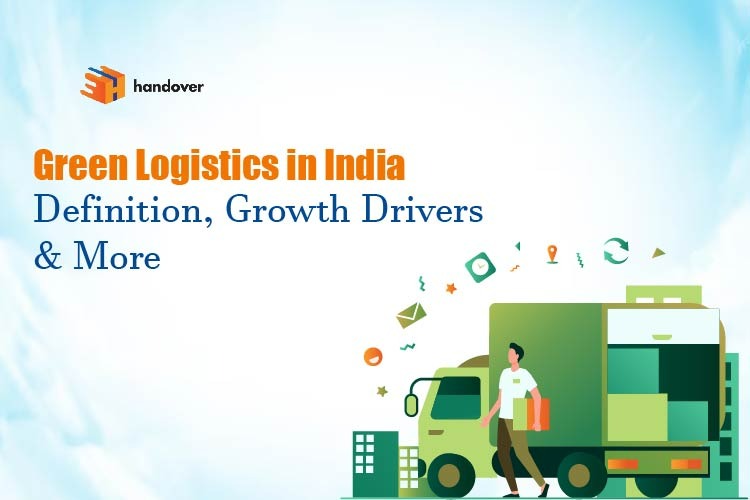Handover news
Blog
Green Logistics in India – Definition, Growth Drivers & More

‘Go Green’ is the buzzword these days as the world is rapidly moving towards sustainable solutions, and India’s logistics industry is at the forefront of this green revolution. The logistics process is not only complex but also long. From sourcing materials to delivering the same to the end user, there lies a supply chain consisting of warehousing, inventory management, order assortment and more. Given the lengthy procedures, the cost often remains high, resulting in businesses shifting the cost burden to the end consumer. That’s where green logistics which implies using electric vehicles and sustainable packaging solutions holds strategic importance.
What’s the Definition of Green Logistics?
Simple. It’s about carrying out logistics practices and procedures with a view to reducing the environmental impact no matter whether it’s about sourcing raw materials or delivering the same to the end user. The bottom line is to ensure the environment stays clean while performing various logistical activities.
Robust Demand for Green Logistics in India
There’s an old saying – “Necessity is the Mother of Invention”. While India and many other countries embraced the traditional logistics ecosystem for long, the impacts of the same on the cost and environment have not been great. The costs and greenhouse gas emissions surge manifold up. Greenhouse gas emissions are a chief reason for global climate change. These emissions show no signs of abating. As per the latest report, India ranks third among the countries with highest CO2 emissions and air pollution. India’s CO2 emissions and air pollution remained at nearly 2,500 Mt and 53 ug/m3, respectively, in 2023, causing health concerns for the country’s population.
The reason for such emissions has been the rampant use of petrol or diesel-powered vehicles for transportation. However, many logistics companies such as handover have realised the importance of using electric vehicles and sustainable packing solutions to curb the environmental impact while significantly lowering the costs for businesses and their customers. This increases the demand for green logistics in India as the country attempts to make the world green and a happy place to live in.
The Infrastructure of Green Logistics in India
The key to successful logistics operations lies in a robust logistics network comprising warehouse locations, capacities and operations, distribution network, packaging and material handling activities. There’s a pressing need to optimise the logistics network. The complexities attached with the same often leads to products in transit for a long time, leading to increased fuel costs and greater emissions using traditional modes of transportation. Also, customers are expecting fast services, leading to too many small shipments, causing elevated fuel costs and increased emissions per distance travelled.
What further causes inefficiencies is the poor road infrastructure across many parts of India. It only slows the speed, increases fuel consumption and leads to inadequate resource utilisation, highlighting the need for green practices to optimise the logistics infrastructure. Optimising the same can help reduce carbon dioxide emissions by 10% and costs by 10-15%, bringing cheer for businesses, their customers and the people in general. Restructuring the supply chain network in a collaborative manner holds the key to green logistics becoming successful in India.
But How to Optimise the Supply Chain for Long-lasting Success?
The key proponents of an effective supply chain include warehouse design, transportation, distribution & route planning, green fleet, green pallets, etc.
Optimising warehouse numbers and locations based on customer count, their location, order size and service level expectations can bring about the much-needed efficiency in India’s logistics ecosystem, lowering costs and carbon dioxide emissions. Following the same helps optimise warehouse operations.
Next comes transportation which accounts for nearly 35% of logistics costs in India. The estimates suggest that transportation activities contribute to 10-15% of overall greenhouse gas emissions in the country.
The moment the warehouse locations are optimised, companies can make changes to their distribution planning system. Choosing an economical path and streamlining order fulfilment process will help reduce fuel consumption and greenhouse gas emissions.
Closing Comments
Green Logistics is certainly the future of India from both environmental and cost perspectives. Businesses will likely thrive owing to the reduced cost due to electric vehicles and sustainable packaging practices in use. handover (handover Karo, Khush Raho) is a leading logistics company ensuring seamless delivery services in Delhi, Mumbai, Ghaziabad, Noida and several other locations across India with its wide-ranging fleet of electric vehicles. As a business enterprise, consider collaborating with handover to deepen your presence through delivery services.
